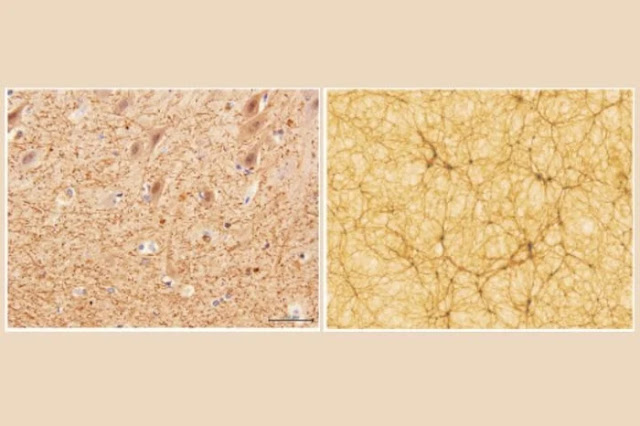What are the Odd Structural connections between human brain and the cosmos .
In fact it is not a different comparison. You may have seen an image that you share all the time, showing a human neuron and a galaxy set imitated, side by side; these look amazingly similar but much more to the human brain - and to the Universe - than the way they look.
Mark Miller/Virgo Consortium/Visual Complexity
But much more to the human brain - and to the Universe - than the way they look.
So astrophysicist Franco Vazza of the University of Bologna in Italy and anesthesiologist Alberto Feletti of the University of Verona in Italy spent the past few years investigating whether the similarities were more than skin.
"Galaxies can be divided into massive structures (called clusters, superclusters, and filaments) that span hundreds of millions of light-years. The space between these structures and neighboring parts is called cosmic voids. The range can be very complex.Gravity accelerates matter at speeds of thousands of kilometers per second over these limits, causing shock waves and turbulence in Antarctic gases.We predicted that the zero-filament limit is one of the most complex versions of the universe, as measured by the number of bits of information that describe it.This got us to thinking: is it more complicated than the brain? "
The two types of structures differ in size by 27 orders of magnitude (two billion billion). But the team's results suggest that, while physical processes that greatly differentiate the structure of the universe and the structure of the human brain can result in similar levels of complexity and self-organization, the researchers said.
The starting point was working similarities between the two. There are approximately 69 billion neurons in the human cerebellum; The observable cosmic web contains over 100 billion galaxies. This is it.
Both systems are organized in well-defined networks, nodes connected through fibers (neurons in the brain, galaxies in the universe).
Both neurons and galaxies have a characteristic scale radius that is only a fraction of the length of the fibers. And the flow of information and energy between nodes is about 25 percent of the mass and energy content of each system.
In addition, there are similarities between the structure of the brain and the structure of the universe. The brain is about 77 percent water. The universe is about 72 percent dark energy.
These are both apparently passive materials that allow their respective systems and play only an indirect role in their internal structures.
With these similarities defined, the team quantitatively compared the two based on images. They obtained slices of the human cerebellum and cortex at different magnitudes, and compared them to simulations of the cosmic web.
What they were looking for were similarities in density fluctuations between the mind and the cosmic web. And they found that the relative distributions of fluctuations in the two systems were surprisingly similar - though on very different scales.
A slice of cerebellum at 40x magnification (left) and simulated cosmic web at 300 light-years a side (right). (University of Bologna)
"Our analysis showed that the distribution of fluctuations within the cerebellum neuronal network on a scale of 1 micrometer to 0.1 millimeter follows a similar progression of the distribution of matter in the cosmic web, but certainly, on a scale larger than 5" . Million to 500 million light years. "
But that was not all.
The team looked at other morphological features, such as the number of fibers attached to each node. The Cosmic Web, based on a sample of 3,800 to 4,700 nodes, averaged 3.8 to 4.1 connections per node. The human cortex, for a sample of 1,800 to 2,000 nodes, had an average of 4.6 to 5.4 connections per node.
Furthermore, both systems showed a tendency for cluster connections around the central node. And both have similar information capabilities.
A recent study shows that human brain memory is about 2.5 petabytes. Another recent study by Vaja shows that the memory capacity required to store the complexity of the universe is about 4.3 petabytes.
"Roughly speaking," the researchers wrote in 2017, "this similarity in memory capacity means that the entire body of information that is stored in a human brain (for example, a person's entire life experience) also distributes. Can be encoded in the galaxies of our universe. "
This is not to say that the universe is a brain, or capable of emotion. But it indicates that the laws governing the development of the structures of the two may be similar.
According to a 2012 paper based on simulation, the causal network representing the massive structure of spacetime in our accelerated universe is a power-law graph remarkably similar to the human brain.
Such studies by Vaja and Felletti may pave the way for better understanding of those laws.
"Once again, structural parameters have identified levels of unexpected agreement. Perhaps, despite clear and unambiguous differences between the physical forces regulating galaxies and neurons, connectivity within the two networks follows similar physical principles. "
"These two complex networks show more similarities than those shared inside the cosmic web and a galaxy or a neuronal network and a neuronal body."
The research has been published in Frontiers in Physics.
Please Comment And Follow By Email For updates . It takes a lot of hard work to research and write .









0 Comments
We welcome relevant and respectful comments. Off-topic or spam comments may be removed.